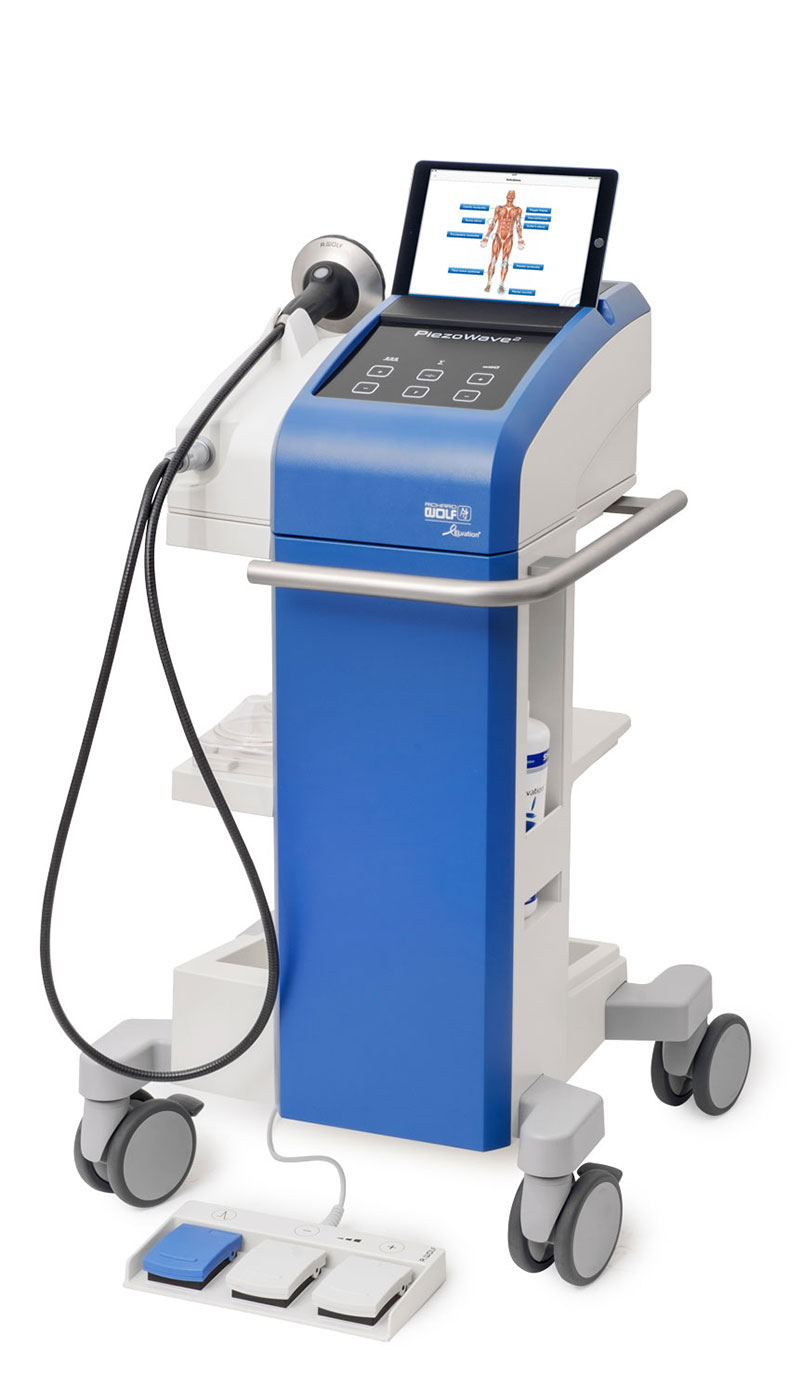
How High-Energy Shockwave Therapy works
Shockwave treatments are performed using a state-of-the-art, high-energy system called the OssaTron, which is the first device developed specifically for ESWT. This device generates electrohydraulic shockwaves (short sound waves with high energy) within a fluid-filled assembly, directing them to a soft plastic head.
The device is positioned to directly touch the skin in the injured area. Controls on the device are set to focus the shockwave, so they travel through the skin and tissue without damaging cells while releasing maximum energy deep inside the tissue, which is at the area that is causing pain.
The energy of the shockwaves delivers “micro-trauma” to the targeted area to shock the body into healing. The body responds by addressing the damage and inflammation at the source of the pain by starting with the construction of new blood vessels. After the treatment, new and healthy tissue will begin to develop, restoring function and reducing pain in areas that were affected by severe inflammation. The pressure exerted on the tissue during shockwave treatment also has a direct and primary analgesic effect, in addition to stimulating long-term healing.
After ESWT High-Energy Treatment
Most patients treated with shockwave experience a significant improvement within several weeks. Their range of motion may increase as a result of the lessening of pain and inflammation.
ESWT has few side effects. In individual cases, however, patients may experience temporary skin reddening, pain or worsening of symptoms during the first one to three weeks after treatment, or bruises in the soft tissue around the injured area.
Shockwave treatments are performed at an outpatient surgery center. Patients are asked to arrive about an hour before scheduled treatment so that information about their general health can be fully reviewed and updated. After the anesthesiologist administers sedation, the shockwave session takes between 15 and 30 minutes.
Patients awaken from the anesthesia soon after the treatment is complete, but they typically relax for a few minutes at the surgery center while full alertness returns and their confidence to walk safely on their own. As with any treatment involving anesthesia, it is required that patients bring another driver to the surgery center to drive them home.
Patients are asked to restrict “stressful activity” like jogging or heavy physical work and from participating in sports, for approximately four weeks following treatment. Moderate pain immediately after treatment is normal but quickly subsides. Patients usually take a non-narcotic, non-prescription analgesic like acetaminophen when they leave the surgery center, and many have no need for any pain relief medicine at all.
